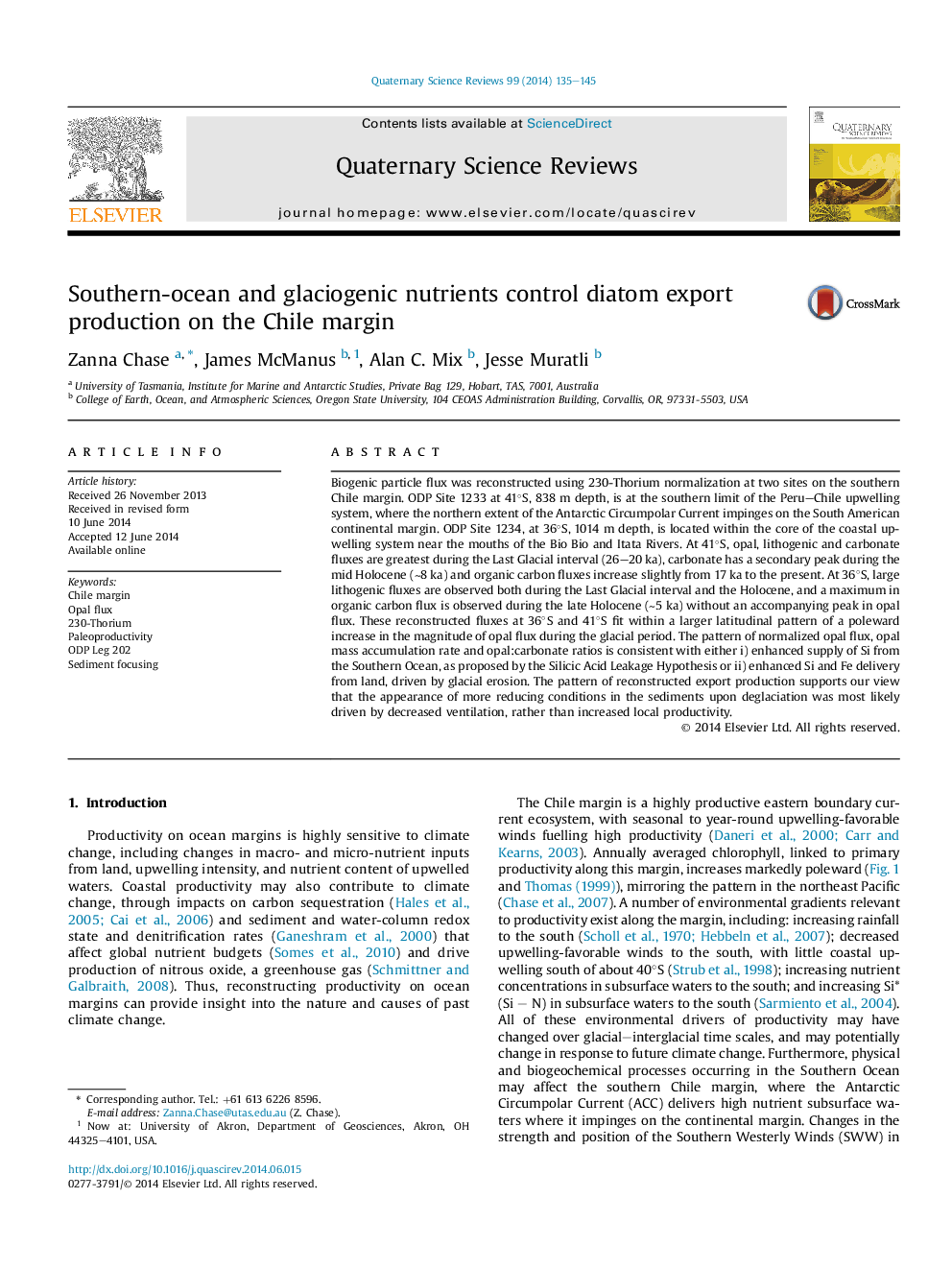| Article ID | Journal | Published Year | Pages | File Type |
|---|---|---|---|---|
| 6445569 | Quaternary Science Reviews | 2014 | 11 Pages |
Abstract
Biogenic particle flux was reconstructed using 230-Thorium normalization at two sites on the southern Chile margin. ODP Site 1233 at 41°S, 838 m depth, is at the southern limit of the Peru-Chile upwelling system, where the northern extent of the Antarctic Circumpolar Current impinges on the South American continental margin. ODP Site 1234, at 36°S, 1014 m depth, is located within the core of the coastal upwelling system near the mouths of the Bio Bio and Itata Rivers. At 41°S, opal, lithogenic and carbonate fluxes are greatest during the Last Glacial interval (26-20 ka), carbonate has a secondary peak during the mid Holocene (â¼8 ka) and organic carbon fluxes increase slightly from 17 ka to the present. At 36°S, large lithogenic fluxes are observed both during the Last Glacial interval and the Holocene, and a maximum in organic carbon flux is observed during the late Holocene (â¼5 ka) without an accompanying peak in opal flux. These reconstructed fluxes at 36°S and 41°S fit within a larger latitudinal pattern of a poleward increase in the magnitude of opal flux during the glacial period. The pattern of normalized opal flux, opal mass accumulation rate and opal:carbonate ratios is consistent with either i) enhanced supply of Si from the Southern Ocean, as proposed by the Silicic Acid Leakage Hypothesis or ii) enhanced Si and Fe delivery from land, driven by glacial erosion. The pattern of reconstructed export production supports our view that the appearance of more reducing conditions in the sediments upon deglaciation was most likely driven by decreased ventilation, rather than increased local productivity.
Keywords
Related Topics
Physical Sciences and Engineering
Earth and Planetary Sciences
Geology
Authors
Zanna Chase, James McManus, Alan C. Mix, Jesse Muratli,
